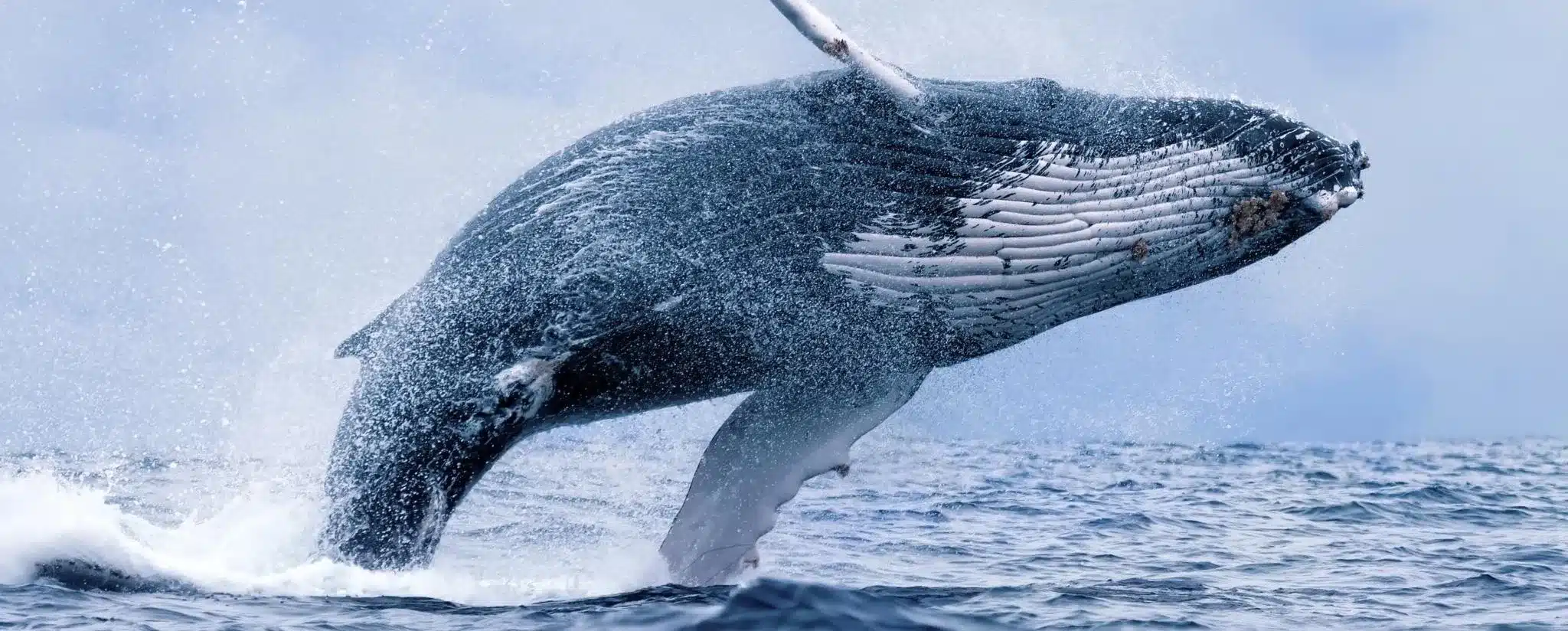About Humpback Whale:
- The humpback whale gets its common name from the distinctive hump on its back. Its long pectoral fins inspired its scientific name, Megaptera, which means “big-winged”
- Appearance:
- Humpback females are larger than males.
- They are mainly black or grey with white undersides to their flukes, flippers, and bellies.
- They also have large knobs on the head, jaws, and body, each knob being associated with one or two hairs.
- Distribution: These whales live in all oceans around the world. They travel great distances every year and have one of the longest migrations of any mammal on the planet.
- They undertake long migrations between polar feeding grounds in summer and tropical or subtropical breeding grounds in winter.
- Humpbacks use a unique method of feeding called bubble netting, in which bubbles are exhaled as the whale swims in a spiral below a patch of water dense with food.
- Conservation status
- IUCN: Least concern
- CITES: Appendix I
Q1: What is Convention on International Trade in Endangered Species of Wild Fauna and Flora (CITES)?
It is an international agreement between governments that aims to ensure that international trade in wild animals and plants does not threaten their survival. CITES was adopted in 1973 and entered into force in 1975.
News: Humpback whale swims over 13,000 km setting a new record in quest for a mate. Details inside
Last updated on June, 2025
→ UPSC Notification 2025 was released on 22nd January 2025.
→ UPSC Prelims Result 2025 is out now for the CSE held on 25 May 2025.
→ UPSC Prelims Question Paper 2025 and Unofficial Prelims Answer Key 2025 are available now.
→ UPSC Calendar 2026 is released on 15th May, 2025.
→ The UPSC Vacancy 2025 were released 1129, out of which 979 were for UPSC CSE and remaining 150 are for UPSC IFoS.
→ UPSC Mains 2025 will be conducted on 22nd August 2025.
→ UPSC Prelims 2026 will be conducted on 24th May, 2026 & UPSC Mains 2026 will be conducted on 21st August 2026.
→ The UPSC Selection Process is of 3 stages-Prelims, Mains and Interview.
→ UPSC Result 2024 is released with latest UPSC Marksheet 2024. Check Now!
→ UPSC Toppers List 2024 is released now. Shakti Dubey is UPSC AIR 1 2024 Topper.
→ Also check Best IAS Coaching in Delhi
























